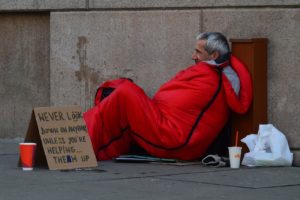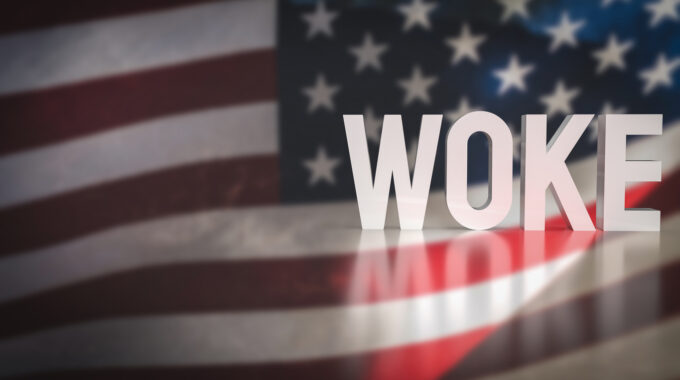For skeptics, the question isn’t “Why should we prioritize DEI?” but rather, “Can we afford not to?” In today’s competitive business landscape, inclusion is no longer optional; it’s essential for success.

12 (Alternative) Days of Christmas
Do You Have an Inclusive Holiday Celebration?
At a time when everyone else seems to be having a holly jolly Christmas, many other people feel left out when lacking an inclusive holiday celebration. While some battle depression, others don’t celebrate simply because it’s not part of their religion or culture.
Becoming more aware of how diverse our nation has become is the first step toward developing greater awareness of those who don’t celebrate this holiday. And it’s important to remember that just because it’s a “tradition” doesn’t necessarily make it OK. Some traditions are best left behind while we create new ones that are more inclusive.
We’ve listed twelve ways that Christmas celebrations may come across as microaggressions, from derogatory to downright prejudicial slights. Spectra Diversity’s training and Facilitation Kit gives insights into microaggressions and how to avoid these slights. Let’s avoid these and other ways that can add salt to other’s wounds, while we seek to embody the true message of Christmas – spreading peace and harmony around the world:
1. Nativity Scenes in Public Places
Hundreds of towns across the U.S. put up nativity scenes in public places. You’d think this violates the separation of church and state, wouldn’t you? But the Supreme Court determined that these scenes are examples of ‘ceremonial deism,’ i.e., ritual, non-religious practices that are acceptable because of their long-term, customary usage. Another example of ceremonial deism are the words “In God We Trust,” which is the motto of the United States and used on our paper currency.
Still, there’s really only one way to interpret Joseph and Mary with the angels, shepherds and wise men fawning over a baby in a manger. It’s the birth of Jesus, and you may be one of the millions of people who don’t believe this tiny baby is the son of God.
Inclusion Tip: In your organization, you can either ban all religious displays, or include all types of religious displays. A partial ban (or partial inclusion) can be seen as a microaggression.
2. The ‘Normal’ Family When There’s No Such Thing
Let’s look a little closer at that nativity scene. Surprise! It looks like a ‘normal’ family, with a mom, a dad and a baby who all appear to be white. There are two things wrong with this picture.
First, Jesus and his parents probably were darker-skinned, since the average Judeans at that time had olive skin, brown eyes and dark brown to black hair. Research on ancient skeletons in Israel actually shows they were biologically close to Iraqi Jews in their physical appearance.
Secondly, there’s no such thing as a ‘normal’ family. While a so-called nuclear family may be the most common, millions of households in the U.S. have a different family structure. In fact, data from a five-year American Community Survey revealed a whopping total of over 10,000 different types of households, which include single parent households or those with two moms or two dads.
Inclusion Tip: Invite a family that is not like yours to a meal with your family. Proximity breeds empathy and distance breeds suspicion.
3. Gingerbread Houses with Homelessness on the Rise
Gingerbread houses are adorable, right? Well, not if you’re homeless. Over a half a million people or about 17 out of every 10,000 people in the U.S. experience homelessness on a given night, according to the Annual Homeless Assessment Report given to Congress. The vast majority stayed in some form of shelter or in transitional housing, while 34 percent lived on the street, abandoned buildings or other places not meant for human habitation. Unaccompanied children and young adults are also affected; as of the last report, there was a 14.3 percent increase in homeless children and teens.
So that cute gingerbread house takes on a different meaning when you realize that thousands of children and adults don’t have a roof over their heads.
Inclusion Tip: Do you know someone who is away from their family for the holidays? Include them in your celebrations. Better yet – volunteer at a homeless shelter or food pantry on a regular basis – not just the holiday season.
4. Consumerism Gone Wild
If you’re not homeless but are among the majority of Americans who can barely make ends meet, the blatant consumerism of Christmas can be offensive, depressing or both. In fact, in a 2017 CareerBuilder report, 78 percent of American workers said they literally live paycheck to paycheck. Women are particularly vulnerable, with 81 percent reporting they live paycheck to paycheck compared to 75 percent of men.
So when you’re struggling to keep the lights on, just imagine how it feels to see all the expensive items in TV commercials and Christmas catalogs that flood our mailboxes this time of year.
Inclusion Tip: Are you creative or a good cook? Make something and bring it to work to share. Encourage conversation with those you don’t know well.
5. Racist Relatives
Christmas gatherings can be a difficult time for families who don’t share the same political views. You may never come to an agreement on the issues, and the Christmas dinner table is certainly not the time for heavy political discussions.
However, if one of your relatives crosses a boundary and uses racist, anti-LGBTQ or xenophobic language, you might break the awkward silence by letting them know that this kind of language is not acceptable in your presence. You could even personalize your perspective by telling Uncle Clunk you have friends who are struggling to be accepted in their communities and that those kinds of words hurt. It’s unlikely you’ll change his mind, but at least he’ll learn that you’re not OK with racist rhetoric.
Inclusion Tip: In addition to speaking out, you can act as an ally if you see or hear non-inclusive behavior. And don’t forget the kids! They’ll learn from the example you are setting.
6. Fat-Shaming
The big feast is one of the most enjoyable parts of Christmas, right? But what if you’re among the estimated 93 million adult Americans – 75 percent of men and 60 percent of women – who are either obese or overweight? In that case, the holidays can be a time of great stress.
Not only are you faced with annual medical costs that average $1,429 more than for people of normal weight; you may also have to face skinny relatives who don’t mince their words as you try to enjoy your mincemeat pie.
Inclusion Tip: If you’re overweight (many of us are) do your best when dining out and leave the guilt at home. One day at a time. If you’re not overweight – good job!
7. Why is Santa Always White?
Who doesn’t think of Santa as a jolly, fat, bearded man with pink cheeks and a red and white suit? And of course he’s white.
But since Santa is as fictitious as, say, ET, who’s to say he always has to be white? And if Santa lives in the North Pole, wouldn’t he look more like the Inuit people (aka Eskimos), who live in the nearby Arctic regions of Canada, Greenland and Russia?
Minorities are the fastest growing population in the U.S. According to the latest Census Bureau, 50 percent children under the age of one belonged to a minority group. While white Americans are still the racial majority (61.3 percent), African Americans comprise an estimated 12.7 percent of the population. Hispanic and Latino Americans comprise another 17.8 percent, and their numbers are growing as immigrants and their U.S.-born descendants continue to grow in population.
Inclusion Tip: There are non-white Santas in many malls and stores. Go find one for your children. Or watch “The Perfect Holiday (2007)” about a young girl turns to a department store Santa in the hopes that he will help find a new husband for her mother.
8. Wasteful Wrapping Paper
Christmas cheer often comes wrapped in packages tied up with ribbons, but this contributes to a major increase in solid waste and harm to the environment. From Thanksgiving to New Year’s, Americans throw away 25 percent more trash than usual, totaling 25 million tons of extra garbage.
All this waste could be avoided if everyone just reused and recycled more. If every family reused two feet of holiday ribbon, we’d save enough miles of ribbon to tie a bow around the world. And if every family re-used enough wrapping paper to wrap three presents, the saved paper could cover 45,000 football fields. And thanks to social media, it’s easy to send out virtual Christmas cards, which would save reams of paper used for billions of Christmas cards.
Inclusion Tip: Reuse and Recycle. In Japan, gifts are often wrapped in cloth, which is reused for multiple occasions.
9. Mistletoe Mischief
For hundreds of years, mistletoe at Christmas is like clinking wine glasses at a wedding reception. It’s ‘tradition’ to kiss when standing under a sprig of mistletoe.
The first problem with this tradition is that unwanted kissing or touching is a big no-no, even under the mistletoe. Thanks to the #MeToo movement, women are calling out this type of lewd and disrespectful behavior.
The second problem is that mistletoe is an unsightly, parasitic plant that sucks water and minerals from its host tree, ultimately harming and potentially killing the tree. So celebrating a parasitic plant that promotes predatory behavior is a tradition that could and should die.
Inclusion Tip: Even a hug can be offensive for some. Ask first and respect the response.
10. “Baby, It’s Cold Outside” in the #MeToo Era
It’s the 1940’s and a woman is at her date’s house, alone and unchaperoned. It’s snowing heavily outside and the woman wonders what her parents, siblings and maiden aunt might think if she stays overnight. Meanwhile, her date is busy trying to persuade her to stay and not risk going out in the inclement weather. The song won an Academy Award for best original song in 1949.
But it’s now the 21st century and the #MeToo era, when date rape is not just a ‘thing;’ it’s a big thing. An estimated 18 percent of women are date raped at some point in their lives. . In this context, it’s understandable why a man’s lyrics feel depicting more predatory than protective as he tries to convince the woman to stay with him.
And the part in the song when she says, “Say, what’s in this drink?” is particularly disturbing when heard through today’s filter. How does the man respond? Sorry, honey, “no cabs to be had out there.”
Inclusion Tip: Don’t assume people drink alcohol. Always ask and respect the response. (see #9)
11. Christmas Songs on the Intercom
When the Supreme Court banned prayer in public schools in the early 60’s, many schools adjusted their holiday programs, finally recognizing that not everyone celebrates Christmas. But while schools may now incorporate a Hanukkah song or two, most songs continue to honor Christmas traditions, cloaked in the argument that they don’t emphasize the religious aspects of Christmas.
That may be true, but they’re still Christmas songs – and they get played for a full month every year over store intercoms and just about every conceivable form of media. Most of us get sick of the same old Christmas songs – but if you don’t celebrate this holiday, it can be even more offensive.
Inclusion Tip: At an organization, keep the intercom music to non-religious fare that celebrates winter or family. Spotify has a ‘non-religious’ holiday playlist which isn’t perfect – but it’s a place to start.
12. Charitable Giving to the Wrong Places
Last but certainly not least are the dangerous ways in which pseudo-charities try to take advantage of people’s generosity at this time of year. From huckster televangelists to fake charities, there are a multitude of ways that people can get taken in.
The good news is that there are many, many charities worth donating to, from community food shelves to legitimate non-profits that help people living on the margins and fringes of society who are struggling to get their feet solidly on the ground. Keep them in mind and give generously when you can.
And remember not just this holiday season but throughout the entire year that we are all stronger through our diversity as well as our inclusion. Our diversity has helped shape our national character and will continue to fuel our strength as long as we remain true to our motto, “E pluribus unum” or “Out of many, one.”



